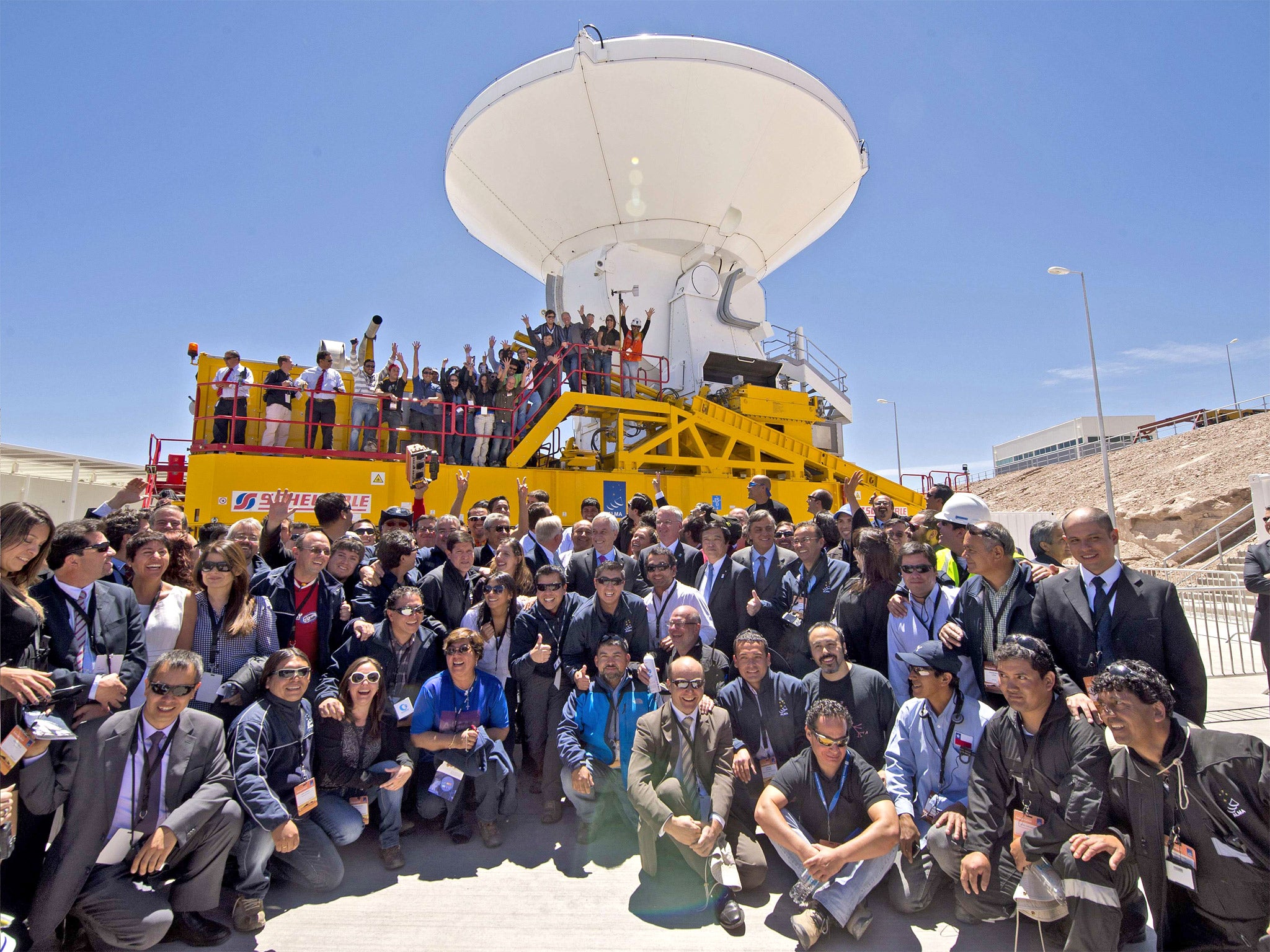First science with ALMA's highest-frequency capabilities
17-AUG-2018
Astronomers observe cosmic steam jets and molecules galore
NATIONAL RADIO ASTRONOMY OBSERVATORY
The ALMA telescope in Chile has transformed how we see the universe, showing us otherwise invisible parts of the cosmos. This array of incredibly precise antennas studies a comparatively high-frequency sliver of radio light: waves that range from a few tenths of a millimeter to several millimeters in length. Recently, scientists pushed ALMA to its limits, harnessing the array's highest-frequency (shortest wavelength) capabilities, which peer into a part of the electromagnetic spectrum that straddles the line between infrared light and radio waves.
"High-frequency radio observations like these are normally not possible from the ground," said Brett McGuire, a chemist at the National Radio Astronomy Observatory in Charlottesville, Virginia, and lead author on a paper appearing in the Astrophysical Journal Letters. "They require the extreme precision and sensitivity of ALMA, along with some of the driest and most stable atmospheric conditions that can be found on Earth."
Under ideal atmospheric conditions, which occurred on the evening of 5 April 2018, astronomers trained ALMA's highest-frequency, submillimeter vision on a curious region of the Cat's Paw Nebula (also known as NGC 6334I), a star-forming complex located about 4,300 light-years from Earth in the direction of the southern constellation Scorpius.
Previous ALMA observations of this region at lower frequencies uncovered turbulent star formation, a highly dynamic environment, and a wealth of molecules inside the nebula.
More:
https://www.eurekalert.org/pub_releases/2018-08/nrao-fsw081718.php
~ ~ ~
Alma Telescope, older article:
Science fiction becomes science reality as Chile unveils $1.4bn ALMA telescope
Jeremy Laurance
@jeremylaurance
Wednesday 13 March 2013 19:35

Science fiction became science reality today when a giant telescope imagined in a novel by one of Britain's greatest astronomers 40 years ago was officially unveiled high in the Andes mountains of Chile.
At a command from President Sebastian Pinera, the 66 house sized antennae that comprise the Advanced Large Millimetre Array (ALMA), the world's most powerful radio telescope, turned toward the sky on the Chajnantor plateau 5,000 metres up in the Atacama desert, one of the driest places on Earth.
“Today Chile has become the capital of world astronomy,” President Pinera said, speaking from the base station 2,000 metres below the plateau. “Chile is a small country but in astronomy we want to become a real giant.”
Earlier, in a greeting from the International Space Station, beamed live to the launch ceremony, US and Canadian astronauts urged the scientists to “enjoy your innovation.”
More:
https://www.independent.co.uk/news/science/science-fiction-becomes-science-reality-as-chile-unveils-14bn-alma-telescope-8533254.html
